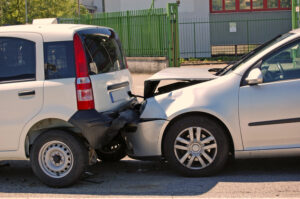Road rage is not a cautionary tale. It’s a violent threat to public safety that’s wreaking havoc on our roads at an increasing and alarming rate—and all too often it ends in tragedy and death.
Houston motorists may be painfully aware of that, given a recent road rage incident that ended in a fatal shooting.
 Here’s how that inspired a new Texas law renewed support for a bill making its way through the Texas legislature and why now it may be more important than ever to spotlight road rage, with a closer look at:
Here’s how that inspired a new Texas law renewed support for a bill making its way through the Texas legislature and why now it may be more important than ever to spotlight road rage, with a closer look at:
- Road Rage: A Persisting Problem with Escalating Intensity
- What Road Rage Looks Like: Common Examples
- The Hard Facts: Road Rage Statistics
- A New Option for Justice? Texas Road Rage Law
- When Road Rage Hits: What to Do
- After Road Rage Accidents, Injury & Death
To explore more traffic safety issues, check out Texas Ranks 17th for Worst Roads in the U.S., Fatal Accidents Drop in 2024, and Deadly Work Zone Accidents Highlight Urgent Need for Action.
Road Rage: A Persisting Problem with Escalating Intensity
Far more than impatience, road rage refers to aggressive maneuvers on the road that often result in violence. Every year, thousands of road rage incidents lead to preventable wrecks, injuries, and deaths, with firearm involvement becoming ever more prominent.
In a recent and horrifying example, a 43-year-old Houston man was discovered shot to death in his vehicle on Highway 6 and Bellfort in what police suspect to be a road rage incident.
This jaw-dropping death has not only captured headlines, but it has also reignited public focus on the issue of road rage, with louder calls for action to address this growing crisis.
What Road Rage Looks Like: Common Examples
Beyond anger, road rage is aggressive, dangerous behavior behind the wheel that puts lives at risk.
 While road rage can come in various forms, most commonly, it appears as:
While road rage can come in various forms, most commonly, it appears as:
- Tailgating: Following too closely increases crash risks while heightening tensions.
- Brake-checking: Slamming on the brakes to intimidate other motorists can increase the risks of rear-end collisions.
- Aggressive honking and/or gesturing: Sometimes done in response to perceived slights on the roads, laying on the horn and making obscene gestures can instantly hit a nerve with other drivers, feeding into escalating road rage.
- Swerving to block or intimidate: Using a vehicle to prevent another driver from proceeding—or leveraging vehicles as weapons—can endanger all surrounding motorists.
- Exiting the vehicle to confront others: Screaming and physical altercations tend to follow.
Throwing objects at vehicles or brandishing weapons can also be common in road rage incidents.
The Hard Facts: Road Rage Statistics
Though often told through personal stories, road rage is a quantifiable danger. In fact, according to the latest data and findings:
- Roughly 66% of traffic fatalities involve aggressive driving.
- Road rage is the 10th leading cause of deadly auto accidents in the U.S.
- Road rage incidents have more than doubled over the last decade, with injuries and deaths from these events increasing nearly every year since 2015.
- Since the pandemic, the use of firearms in road rage incidents has spiked.
- Most incidents of road rage go unreported.
As chilling as these road rage statistics may be, they shed crucial light on a worsening problem that won’t solve itself.
A New Option for Justice? New Texas Road Rage Law
One Houston father has taken on a mission to fight road rage and push for lasting change to help future victims.
 After losing his daughter in a road rage incident, Daniel Wilson became a passionate advocate for a new law, Texas House Bill 2621 (HB 2621), that ensures:
After losing his daughter in a road rage incident, Daniel Wilson became a passionate advocate for a new law, Texas House Bill 2621 (HB 2621), that ensures:
- Traffic camera footage is preserved.
- That preserved footage is available to support the investigations and prosecutions of road rage cases.
Passed by the 89th Legislature, HB 2621 is set to take effect on September 1, 2025.
When that happens, the Texas Department of Transportation (TxDOT) will be required to retain live traffic cam footage, potentially providing crucial evidence in criminal investigations. Focused on improving evidence and accountability, this new law represents a meaningful step toward addressing road rage more effectively across Texas.
When Road Rage Hits: What to Do
Whenever you’re ever faced with road rage, here’s what you can do to de-escalate the situation, whether you or another motorist is the one ‘raging.’
If you feel road rage bubbling up:
- Take deep breaths: Deep breathing activates the parasympathetic nervous system, which can slow the heart rate, lower blood pressure, and reduce the body’s stress response. Drawing attention away from external triggers and focusing on controlled breaths can be calming and provide mental clarity, even in tense situations like road rage.
- Use calming tools: Play soothing audio or music to redirect your attention and talk yourself down from intense interactions on the road.
- Plan ahead: Avoid peak traffic times and congestion hot spots, so you’re not driving during complex conditions when misbehaving drivers may be more prevalent.
- Practice empathy: Assume the other driver is having a bad day and not ‘out to get’ you.
If you end up being the target of road rage:
- Don’t engage: Avoid responding to aggressive drivers and try not to make eye contact or gestures. Aggression can breed more aggression, with tits-for-tats snowballing very quickly into life-threatening actions.
- Leave space: Let an aggressor pass you. Do not challenge their behavior, cut them off, or try to ‘beat’ them by speeding.
- Report unsafe drivers: Call 911 ASAP if you’re in immediate danger. Call a non-emergency police line to report overly aggressive drivers.
- Stay in public: Lock your doors and keep your windows up. Do not try to talk to aggressors. If necessary, call law enforcement and wait for police intervention.
After Road Rage Accidents, Injury & Death
Road rage can come out of nowhere, but it doesn’t have to end in catastrophe or death. Nevertheless, that is the outcome for many families, leaving them with profoundly devastating losses.
When that happens, there may be legal options for pursuing justice and making negligent parties pay for the harm they’ve caused. While money can never make up for the irreversible losses caused by road rage deaths, financial recoveries can support victims as they pick up the pieces.


